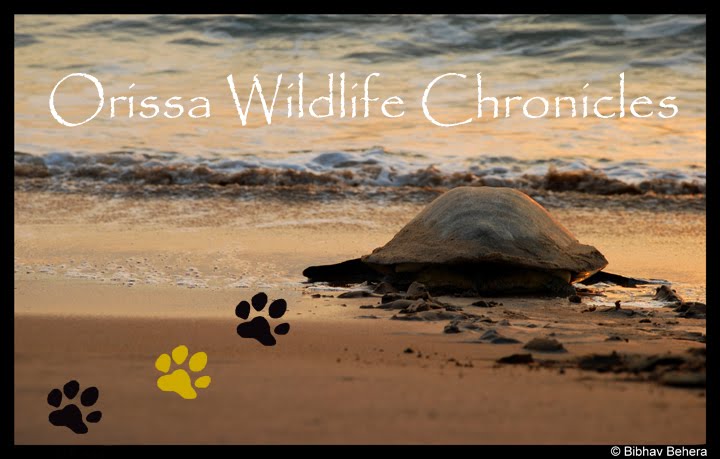
Olive Ridley turtles come to the shores of Orissa every year to lay eggs. In fact Orissa hosts the largest turtle nesting site in the world after Costa Rica . The turtles come in November and start looking for mates in the warm shallow waters of the Bay of Bengal. They then mate around January and early in February the nesting starts majorly on the beaches of Rushikulya, Gahirmatha and Debi. Each Olive Ridley mother lays around 150-200 eggs. Some time in March (45 days after laying of the eggs) the hatchlings emerge from the soil. Only 1 in 1000 hatchlings survives to adulthood. Olive Ridleys return to these beaches every year where they were born striking a sense of mystery in our minds as to how they do so...
They migrate from the seas near South America all the way to the Bay of Bengal in Orissa for this annual ritual. Every year around 2 lakh Olive Ridley turtles migrate to the seawaters of Orissa. Due to extensive trawling in the restricted waters near the nesting sites, a huge number of turtles fall prey to trawling nets and die. they need air to breathe but when they get caught in the nets they suffocate and drown. Every year around 18 thousand turtles die this way.
Picture: A dog eats out of an Olive Ridley carcass washed ashore. It is very likely that the turtle was killed by getting caught in a trawler net.
Trawlers are supposed to be equipped with Turtle Exclusion Devices (TEDs) which allow the turtles to escape from the nets. These have been provided to the trawlers free of cost by the authorities. But since the trade off is that around 5% of the fish also escape, the trawlers do not use them. Is 5% of fish a bigger tradeoff than the lives of these wonderful creatures?
Picture: A trawler fishes in the restricted waters near Debi Beach where Olive Ridleys nest. It is in these waters that the turtles mate.Right now the mating process is on in the waters and thousands of turtles are still dying due to illegal trawling. The dead turtles get washed ashore and end up as food for feral dogs. But is this the cycle of nature? It definitely would have been had the turtles died of natural causes. Apart from this there are various other issues such as lack of reconnaissance and patrolling of the waters. There is also a shortage of volunteers to work during the nesting season. In order to provide goody goody figures, the forest officials often under report the deaths of the turtles. All these collated act as a nemesis to the future of the Ridleys. Is this where we are headed? The case of the Ridley is sensitive and delicate. If immediate measures are not taken, we might be mute witness to the extinction of yet another wonderful species from the face of this planet. It's time to wake up and take action. Make your stand on the cause.
Picture (Below): Olive Ridley turtles mating. The male is on the top.
SAVE THE RIDLEYS BEFORE IT IS TOO LATE




brilliant stuff you got there.. we are hosting this media and communication fest called Article 19 at Manipal.. check out the site, we have killer competitions that suit your interests.. check out the site:
ReplyDeletewww.article-19.com
www.bijleebola.blogspot.com
Good reporting Bibhav! Look forward to seeing more.
ReplyDeleteApana